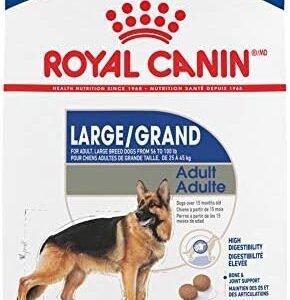Ephedrine, an essential medication in the realm of canine healthcare, plays a crucial role in maintaining the health and well-being of our four-legged companions. This introduction provides an overview of Ephedrine and its significance, offering pet owners and veterinarians valuable insights into this medication’s usage.
Ephedrine at a Glance
To make the understanding of Ephedrine more accessible, let’s start by creating a table summarizing vital drug information for veterinary use. This table will serve as a quick reference for veterinarians and pet owners alike, ensuring that essential details are readily accessible when needed.
Essential Drug Information
| Drug | Ephedrine |
|---|---|
| Drug Type | Sympathomimetic |
| Used For | Cardiovascular and respiratory support |
| Administered | Injectable or oral administration |
| FDA Approved | Yes |
This table is designed to provide a clear and concise snapshot of Ephedrine’s key attributes, such as its common names, drug type, primary usage, methods of administration, and FDA approval status. These details are essential when considering Ephedrine as a potential treatment for various canine health concerns.
Table of Contents
The Importance of Consultation
Before delving deeper into the specifics of Ephedrine, it is vital to emphasize the importance of consulting a qualified veterinarian. The administration of any medication to dogs should be guided by professional expertise, as each dog’s health profile is unique. Your veterinarian can provide personalized recommendations based on your pet’s specific needs, ensuring both safety and efficacy.

II. Understanding Ephedrine
In this section, we will embark on a journey to unravel the mysteries of Ephedrine, shedding light on its nature, mechanisms of action, and its role in addressing various canine health concerns.
What is Ephedrine?
Ephedrine, commonly known as a sympathomimetic agent, is a medication that plays a pivotal role in veterinary medicine. It is classified as a sympathomimetic because it mimics the effects of the sympathetic nervous system, which is responsible for the “fight or flight” response. When administered to dogs, Ephedrine primarily impacts the cardiovascular and respiratory systems.
Mechanism of Action
Ephedrine operates by stimulating specific adrenergic receptors, leading to the release of norepinephrine, a neurotransmitter. This, in turn, causes a series of physiological responses. Here’s a simplified breakdown of Ephedrine’s mechanism of action:
- Bronchodilation: Ephedrine helps relax and expand the airways in the respiratory system, making it easier for dogs to breathe. This property is especially valuable in cases of respiratory distress.
- Increased Heart Rate: Ephedrine stimulates the heart, resulting in a faster heart rate. This effect can enhance cardiac output, making it useful in addressing certain cardiac conditions.
- Blood Pressure Elevation: Ephedrine can elevate blood pressure, making it valuable for dogs with low blood pressure, shock, or other circulatory issues.
- Constriction of Blood Vessels: The drug also constricts blood vessels, which can be beneficial in situations where reduced blood flow to specific areas of the body is a concern.
Ephedrine’s ability to target the cardiovascular and respiratory systems makes it a versatile medication for managing various health conditions in dogs.
Common Conditions and Ailments in Dogs Treated with Ephedrine
Ephedrine can be a valuable asset in managing a range of conditions and ailments in dogs, particularly those associated with the cardiovascular and respiratory systems. Here are some of the common health issues where Ephedrine may be employed as a treatment:
1. Asthma and Bronchitis:
Ephedrine’s bronchodilatory properties can provide relief for dogs suffering from asthma and bronchitis, as it helps open up constricted airways, making breathing easier.
2. Shock:
In cases of circulatory shock, where blood pressure drops significantly and vital organs are at risk, Ephedrine’s ability to raise blood pressure and constrict blood vessels can be a lifesaving intervention.
3. Cardiac Arrest:
Ephedrine can be used to stimulate the heart when dogs experience cardiac arrest or severe bradycardia (abnormally slow heart rate).
4. Anaphylactic Reactions:
In situations where dogs experience severe allergic reactions, such as anaphylaxis, Ephedrine’s cardiovascular effects can be beneficial in stabilizing their condition.
5. Post-Surgical Recovery:
Ephedrine may be used in the post-surgical phase to support dogs with reduced blood pressure due to anesthesia or other factors.
It’s important to note that Ephedrine should only be administered under the guidance of a qualified veterinarian, as its use and dosage should be tailored to the specific needs of the dog. Moreover, the potential side effects and contraindications associated with Ephedrine underscore the importance of professional consultation before use.
III. Benefits of Ephedrine for Dogs
Ephedrine, as we have explored in the previous section, is a medication with a specific set of actions that can address various canine health issues. Its multifaceted properties and its role in veterinary medicine offer several benefits in treating specific conditions and ultimately enhancing the quality of life for our furry friends. Let’s delve into the benefits of Ephedrine for dogs:
1. Management of Respiratory Conditions
Ephedrine is a powerful bronchodilator, meaning it helps widen the airways in the lungs. This property is particularly valuable in the management of respiratory conditions like asthma and bronchitis. Dogs suffering from these conditions often struggle to breathe due to narrowed air passages. Ephedrine’s bronchodilatory effects make it easier for them to inhale and exhale, alleviating respiratory distress.
2. Counteracting Circulatory Shock
Circulatory shock is a critical condition where the body’s vital organs are not receiving adequate blood flow. In such situations, low blood pressure can be life-threatening. Ephedrine comes to the rescue with its ability to raise blood pressure and constrict blood vessels. This helps maintain blood flow to the vital organs, preventing potential organ failure and improving the chances of survival.
3. Cardiovascular Support
Ephedrine’s capacity to stimulate the heart is a vital advantage in addressing cardiac conditions. When dogs experience cardiac arrest or severe bradycardia (abnormally slow heart rate), Ephedrine can be administered to increase the heart rate and support cardiac function. This immediate intervention can be life-saving in emergency situations.
4. Anaphylaxis Management
Anaphylaxis is a severe and rapid-onset allergic reaction that can be life-threatening. In such situations, Ephedrine’s cardiovascular effects can help stabilize the dog’s condition. By increasing blood pressure and supporting the circulatory system, Ephedrine can provide valuable time for further treatment and intervention.
5. Post-Surgical Recovery
After surgery, dogs may experience a drop in blood pressure due to the effects of anesthesia or other factors. Ephedrine can be used in the post-surgical recovery phase to counteract this drop in blood pressure and support the dog’s circulatory system. This ensures a smoother recovery and reduces the risk of complications.
While Ephedrine offers these significant benefits in treating specific health issues in dogs, it’s important to emphasize that it should only be administered under the guidance and supervision of a qualified veterinarian. The dosage and frequency of Ephedrine use should be tailored to the individual dog’s needs and condition.
Moreover, Ephedrine is not without potential side effects and contraindications, further highlighting the importance of professional consultation. The next section will provide detailed information on administering Ephedrine to dogs, including dosage guidelines and tips for safe use. This knowledge is crucial for ensuring that dogs receive the maximum benefits while minimizing potential risks.
IV. Administering Ephedrine to Dogs
When it comes to administering medications to dogs, it’s essential to be precise and attentive to detail. Ephedrine is no exception. To ensure its safe and effective use, it’s crucial to understand the dosage guidelines, frequency of administration, and directions for use. Let’s explore these critical aspects of administering Ephedrine to dogs:
Dosage Guidelines
The appropriate Ephedrine dosage for a dog is not a one-size-fits-all scenario. It depends on several factors, including the dog’s size, age, and the specific condition being treated. Therefore, determining the right dosage should be done under the guidance of a veterinarian. A veterinarian will consider these factors and provide a tailored prescription for your dog. This prescription will include the recommended dosage, which typically ranges from 0.1 to 0.5 milligrams per pound of the dog’s body weight.
- Hypotension (low blood pressure): 0.05–0.2 mg/kg intravenously (IV), repeated as necessary. The effect lasts for about 5–15 minutes.
- Urinary incontinence: 1 mg/kg orally (PO) every 12 hours. The dose can be adjusted based on the dog’s response, with a maximum of 2.5 mg/kg PO every 12 hours.
- Nasal congestion: 0.5 mg/kg PO every 12 hours or 1 drop of a 0.5% solution intranasally every 12 hours.
Frequency of Administration
The frequency of Ephedrine administration varies based on the condition being treated. Some dogs may require daily doses, while others may only need it periodically or in emergency situations. It’s essential to adhere to the prescribed schedule provided by your veterinarian. Missing doses or administering them inconsistently can lead to suboptimal results and potential complications.
Directions for Use
Ephedrine is available in different forms, including tablets and injectable solutions. The specific form and method of administration will be determined by your veterinarian. However, you can make the process more manageable for your dog by following these tips:
- Oral Tablets: If Ephedrine is prescribed in tablet form, you can try hiding it in a treat or food your dog enjoys. This can make the administration more appealing and less stressful for your pet. Ensure your dog consumes the entire tablet to receive the full dosage.
- Injectable Solution: If Ephedrine is administered through an injection, it’s crucial to follow the veterinarian’s instructions carefully. Injections should only be administered by a qualified professional or under their guidance.
Importance of Adhering to Prescribed Dosages
Consistency is key when administering Ephedrine or any medication to dogs. Deviating from the prescribed dosage can lead to ineffective treatment or potential side effects. It’s essential to maintain open communication with your veterinarian. If you notice any changes in your dog’s condition or if you’re concerned about side effects, contact your veterinarian immediately. They can adjust the dosage or recommend alternative treatments if necessary.
Missed Dose Guideline
If you miss a dose of Ephedrine, it’s important to take prompt action. Contact your veterinarian for guidance on how to proceed. Do not administer a double dose to make up for the missed one, as this can lead to overdose or adverse effects. Your veterinarian will provide specific instructions on whether to skip the missed dose or how to adjust the administration schedule.
In summary, administering Ephedrine to dogs requires precision, adherence to prescribed dosages, and close collaboration with a veterinarian. Your veterinarian will guide you through the process, ensuring that your dog receives the right treatment while minimizing risks. In the next section, we’ll explore potential side effects and precautions associated with Ephedrine use in dogs. Understanding these aspects is crucial for ensuring your dog’s safety and well-being during treatment.
V. Potential Side Effects and Precautions
Ephedrine, like any medication, can bring about various effects, both beneficial and adverse. It’s crucial to be aware of the potential side effects, precautions, and interactions when using Ephedrine for dogs. This knowledge allows for safe and effective treatment while minimizing risks. In this section, we’ll delve into common side effects, how to identify severe or adverse reactions, precautions for pregnant or lactating dogs, and possible interactions with other medications or supplements.
Common Side Effects of Ephedrine in Dogs
Understanding the common side effects of Ephedrine is essential for monitoring your dog’s response to the medication. While not all dogs will experience these side effects, it’s crucial to be prepared and recognize them if they occur. Common side effects may include:
- Increased Heart Rate: Ephedrine is a stimulant that can cause an elevated heart rate in some dogs.
- Restlessness: Your dog may become more active or agitated than usual.
- Increased Blood Pressure: Ephedrine can lead to higher blood pressure, which may be problematic for dogs with pre-existing heart conditions.
- Increased Respiratory Rate: Some dogs may exhibit rapid or labored breathing.
- Loss of Appetite: Ephedrine can temporarily decrease your dog’s appetite.
- Nervousness or Anxiety: Dogs may display signs of nervousness or anxiety.
- Vomiting or Diarrhea: Gastrointestinal upset, such as vomiting or diarrhea, can occur in response to Ephedrine.
- Tremors or Muscle Twitching: In some cases, dogs may experience muscle tremors or twitching.
- Excessive Thirst and Urination: Increased thirst and urination can be observed in dogs taking Ephedrine.
- Sleep Disturbances: Ephedrine’s stimulating effect can lead to sleep disturbances.
It’s important to note that these side effects are typically mild and short-lived. However, if your dog experiences severe or persistent side effects, it’s crucial to contact your veterinarian promptly.
Identifying Severe or Adverse Reactions
While most dogs tolerate Ephedrine well, severe or adverse reactions are possible. If you notice any of the following signs in your dog, it’s essential to seek immediate veterinary attention:
- Severe Restlessness or Agitation: If your dog becomes extremely agitated and restless, it may be a sign of a severe reaction.
- Rapid, Irregular Heartbeat: An extremely elevated or irregular heartbeat is cause for concern and should be addressed promptly.
- Difficulty Breathing: Any signs of severe breathing difficulties require immediate attention.
- Vomiting or Diarrhea with Blood: If your dog vomits or has diarrhea with blood in it, contact your veterinarian right away.
- Convulsions or Seizures: Seizures or convulsions are severe adverse reactions that necessitate urgent care.
- Collapse: If your dog suddenly collapses or loses consciousness, it’s a medical emergency.
Precautions for Pregnant or Lactating Dogs
Ephedrine use in pregnant or lactating dogs should be approached with caution. It’s essential to consult with your veterinarian before administering Ephedrine to a pregnant or nursing dog. The potential effects of the medication on developing fetuses or puppies must be considered. Your veterinarian will weigh the risks and benefits and provide guidance accordingly.
Interactions with Other Medications or Supplements
Ephedrine can interact with other medications or supplements your dog may be taking. It’s vital to inform your veterinarian of all the medications, including over-the-counter drugs and supplements, that your dog is currently using. Potential interactions may occur with drugs such as:
- Monoamine oxidase inhibitors (MAOIs): Ephedrine should not be used in dogs taking MAOIs, as it can lead to dangerously high blood pressure.
- Beta-blockers: Combining Ephedrine with beta-blockers can have counteractive effects.
- Tricyclic antidepressants: Interaction with tricyclic antidepressants can lead to increased heart rate and blood pressure.
- Other stimulants: The concurrent use of multiple stimulants can lead to excessive stimulation and potential complications.
VI. Consultation with a Veterinarian
When it comes to using Ephedrine for your dog’s healthcare, seeking professional guidance is of paramount importance. In this section, we’ll underscore the significance of consulting a veterinarian, addressing concerns related to overdose, signs or symptoms that warrant a call to the vet, and how to discuss Ephedrine with your veterinarian, including the option of seeking a second opinion if needed.
Emphasizing the Importance of Professional Guidance
Veterinarians play a crucial role in ensuring the health and well-being of your dog. When it comes to medications like Ephedrine, consulting a veterinarian is essential for several reasons:
- Dosage Determination: Veterinarians can calculate the appropriate dosage of Ephedrine based on your dog’s size, age, and condition. This ensures your dog receives the correct amount for effective treatment.
- Health Assessment: A veterinarian can assess your dog’s overall health, including any pre-existing medical conditions or medications your dog may be taking. This evaluation helps identify potential contraindications or interactions.
- Monitoring and Adjustments: Veterinarians can closely monitor your dog’s response to Ephedrine and make necessary adjustments to the treatment plan. This is especially important if your dog experiences side effects or if the condition being treated changes over time.
- Advice on Administration: Veterinarians can provide guidance on how to administer Ephedrine to your dog, whether it’s in tablet form, oral liquid, or injection. They can offer tips on making the process as stress-free as possible for both you and your dog.
Overdose Information and Possible Toxicity/Effect
Ephedrine, while beneficial when used appropriately, can lead to problems if administered incorrectly or in excessive amounts. An overdose of Ephedrine can result in various adverse effects, which is why it’s vital to adhere to your veterinarian’s instructions and dosage guidelines.
Overdose symptoms may include:
- Severe agitation
- Excessive panting
- Tremors
- High fever
- Increased heart rate
- Seizures
- Vomiting or diarrhea
- Hypertension (high blood pressure)
- Arrhythmias (abnormal heart rhythms)
If you suspect your dog has ingested too much Ephedrine or is exhibiting these symptoms, it’s a medical emergency. Contact your veterinarian or the nearest animal emergency center immediately. The sooner you seek professional help, the better the chances of a positive outcome.
Signs or Symptoms: When to Call the Vet
While common side effects of Ephedrine are typically mild and temporary, certain signs or symptoms should prompt you to contact your veterinarian:
- Severe Restlessness or Agitation: If your dog becomes extremely agitated and restless, it may be indicative of an adverse reaction to Ephedrine.
- Excessive Panting: Uncontrollable or heavy panting is a sign of distress and requires attention.
- Rapid, Irregular Heartbeat: Any extreme increase in heart rate or abnormal rhythms should be addressed.
- Difficulty Breathing: Signs of severe respiratory distress, such as labored or rapid breathing, are concerning.
- Seizures: Seizures or convulsions should be evaluated promptly.
- Loss of Consciousness: If your dog collapses or loses consciousness, it’s a medical emergency.
It’s important to have an open line of communication with your veterinarian and report any unusual symptoms or behaviors your dog exhibits during Ephedrine treatment.
How to Discuss Ephedrine with Your Veterinarian
When discussing Ephedrine with your veterinarian, it’s essential to be open and transparent. Here’s how to approach the conversation:
- Share Your Concerns: Begin by expressing your concerns and reasons for considering Ephedrine as a treatment option for your dog.
- Provide Medical History: Offer a detailed medical history of your dog, including pre-existing conditions and current medications.
- Ask Questions: Don’t hesitate to ask any questions or seek clarification on aspects of Ephedrine treatment that you’re unsure about.
- Follow Recommendations: Follow your veterinarian’s recommendations regarding dosage, administration, and monitoring.
- Report Changes: If your dog experiences side effects or changes in their condition, promptly report these to your veterinarian. They may need to adjust the treatment plan.
Seeking a Second Opinion
In some cases, you may feel uncertain about the treatment plan proposed by your veterinarian. Seeking a second opinion is a valid and responsible course of action. A different perspective from another experienced veterinarian can provide clarity and ensure you’re making the best decisions for your dog’s health. When considering a second opinion, here are some key points to keep in mind:
- Be Open with Your Current Veterinarian: Inform your current veterinarian that you’re seeking a second opinion. They should support your decision and provide relevant medical records.
- Gather Relevant Information: Provide the second opinion veterinarian with all relevant information, including your dog’s medical history and the current treatment plan.
- Ask for the Rationale: When discussing the treatment plan with the second opinion veterinarian, ask for their rationale and how it differs from the initial recommendation.
- Consult a Specialist: In complex cases, it may be beneficial to consult a veterinary specialist in the particular field relevant to your dog’s condition.
Remember that your primary goal is to ensure the best possible care for your dog. Seeking a second opinion demonstrates your commitment to their well-being and health.
VII. Comparison with Similar Drugs in this Category
When it comes to managing certain canine health issues, Ephedrine is just one option in a category of drugs that share similar treatment goals. In this section, we’ll compare Ephedrine with other drugs in its category, focusing on efficacy, the circumstances in which alternatives might be chosen, and the cost considerations.
Comparing the Efficacy of Drugs
- Ephedrine: Ephedrine is a sympathomimetic amine, which means it stimulates certain receptors in the body, leading to increased heart rate and increased strength and force of heart contractions. This can help with conditions such as collapsing trachea and heart failure by reducing airway constriction and increasing cardiac output.
- Albuterol: Albuterol is another sympathomimetic drug that’s often used in dogs with collapsing trachea and other respiratory issues. It works similarly to Ephedrine by dilating the airways and improving breathing.
- Theophylline: Theophylline is a bronchodilator and smooth muscle relaxant. It helps in cases of bronchial constriction and can improve respiratory function.
The choice of drug often depends on the specific condition being treated and the dog’s response to the medication. In some cases, a veterinarian may try different medications to see which one is most effective for the individual dog.
When Alternative Drugs Are Chosen
- Ephedrine Side Effects: Ephedrine can have side effects such as restlessness, increased heart rate, and high blood pressure. If a dog experiences these side effects, or if they have a pre-existing condition that makes Ephedrine unsuitable, an alternative may be chosen.
- Drug Interactions: In some cases, a dog may be taking medications that interact negatively with Ephedrine. In such situations, alternative drugs might be preferred.
- Individual Dog Response: Every dog is unique, and their response to medications can vary. If a dog does not respond well to Ephedrine, alternatives are explored.
- Underlying Conditions: Depending on the specific health issue and any underlying conditions, alternative drugs may be chosen for their potential to address those issues more effectively.
Comparing the Cost of the Drug
The cost of medications for your dog’s treatment can be a significant consideration. It’s important to note that prices can vary based on factors such as the dog’s size, the dosage required, and where the medication is purchased. Here’s a general cost comparison:
- Ephedrine: Ephedrine is a relatively affordable medication. It’s often available in generic forms, which can be less expensive than brand-name options.
- Albuterol: Albuterol is also reasonably priced, and generic versions are commonly available.
- Theophylline: The cost of Theophylline can vary, but it’s typically on par with Ephedrine and Albuterol in terms of affordability.
It’s advisable to consult with your veterinarian regarding the best and most cost-effective treatment option for your dog. They can consider your dog’s unique needs, available budget, and potential cost-saving strategies.
FAQs
What is Ephedrine, and how does it work in dogs’ bodies?
Ephedrine is a sympathomimetic amine. It works by stimulating certain receptors in a dog’s body, leading to increased heart rate and stronger heart contractions. This, in turn, can help alleviate conditions like collapsing trachea and heart failure by reducing airway constriction and increasing cardiac output.
Are there common side effects of Ephedrine in dogs?
Yes, some common side effects may include restlessness, increased heart rate, and elevated blood pressure. However, it’s important to remember that not all dogs will experience these side effects, and the severity can vary.
When should I consult a veterinarian before using Ephedrine for my dog?
It’s crucial to consult your veterinarian before administering any medication, including Ephedrine, to your dog. A veterinarian will determine if Ephedrine is appropriate for your dog’s specific condition and health status.
Can Ephedrine be used for all dog breeds and sizes?
Ephedrine can be used for a variety of dog breeds and sizes, but the dosage may need to be adjusted based on your dog’s size and condition. Consult your veterinarian to ensure the correct dosage is administered.
How should I administer Ephedrine to my dog?
Ephedrine is often available in tablet form. Your veterinarian will provide specific dosage instructions, but it’s typically administered orally. Some dogs may be given Ephedrine with food or a treat to make administration easier.
What should I do if I miss a dose of Ephedrine for my dog?
If you miss a dose, administer it as soon as you remember. However, if it’s close to the time for the next scheduled dose, skip the missed one and continue the regular dosing schedule. Do not double dose to make up for a missed one.
Can Ephedrine interact with other medications or supplements my dog is taking?
Ephedrine can interact with certain medications, so it’s essential to inform your veterinarian of all the medications, supplements, or herbal products your dog is using. This helps prevent potential drug interactions.
Are there any precautions for pregnant or lactating dogs when using Ephedrine?
Ephedrine use in pregnant or lactating dogs should be carefully monitored and discussed with your veterinarian. It may be used when the benefits outweigh the risks, but it’s essential to follow your veterinarian’s guidance.
Are there any alternatives to Ephedrine for managing similar health issues in dogs?
Yes, there are alternative medications like Albuterol and Theophylline, which are also used to manage conditions like collapsing trachea and respiratory problems. The choice of medication depends on the specific condition and the dog’s response.
Is Ephedrine an FDA-approved medication for dogs?
Ephedrine itself may not be FDA-approved specifically for dogs, but it is a medication commonly used off-label by veterinarians to address certain conditions in canines. Always follow your veterinarian’s guidance regarding its use.
























